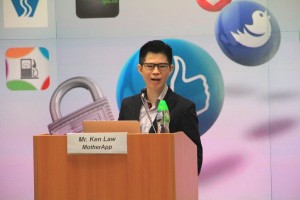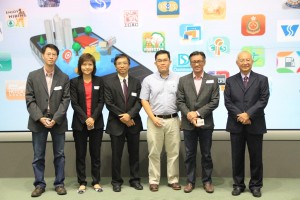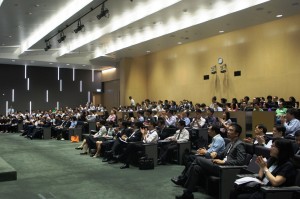Along with Apple, MTR, and a few other corporates, Motherapp spoke at the Government Technology Forum on creating great mobile experience. As the mobile app market is significantly different from other markets, we are always keen to share our experiences with others.
It is our core belief that our work should help people’s daily lives, one app at a time. In other words, we believe that mobile apps are here to solve a problem – not just for our clients, but also for the end users. To ensure that the effort we put into developing apps will not go to waste, the app’s target users are heavily involved in the early stages of app development, also known as the UX (user experience) design process.
Empathise & Define
During this stage, through interviews, focus groups, observations and other approaches, our UX experts would develop a deep understanding of the stakeholders of the app. Persona representing each group of stakeholder’s profile, primary activities, desired outcomes and barriers to success, will be written. The UX team will then be able to identify the root problem that the app should aim to solve.
Ideate & Select
Not until then will the designers provide initial concepts, conduct further testing on end users, and discuss the pros and cons of each concept openly with the client. By the end of the UX design, our client and our team will come to an agreement to the app features and directions, as well as an evident definition of project success.
This process is valuable in many ways – from preventing miscommunication to ensuring that the app will eventually be useful and successful.
Case study: Abbott Laboratories
Like many of our clients, the Abbott team came to us with a solid app idea and goal to achieve in mind. Their goal for the project is to create an app that helps children in Hong Kong to pass the kindergarten examination and their original idea was to develop an app with a list of questions that are frequently asked during these interviews. To follow through our UX design process, we invited children and parents in for a focus group to investigate the feasibility of this app idea.
We found out from the focus groups that parents, the key decision maker on installing the app, do not find the concept of question listing very useful, and very few indicated their interest in downloading the app. They explained that unless the app has elements that cannot be replaced by other medium, they usually prefer to limit their children’s screen time to a minimum. Our UX team proceeded to perform a mock kindergarten interview with the end users – the children. Through observation, we found out that the critical obstacle for young children was to overcome their shyness, instead of to know the correct answers of each question.
The end product was radically different from the original idea – the Abbott EyeQ Interview App has a design approach inspired by FaceTime. Children are given exposure to “interviewers” in different languages, and thus able overcome their barrier to talk to adults that they are unfamiliar with. With that said, this approach is still align with the app’s ultimate goal. We were happy to say that the app was highly successful, with a high number of downloads as well as retention rate.
To conclude, the greatest risk in creating mobile apps is that the end product do not benefit the end users in any way. The UX design, if implemented thoroughly and carefully, is a great methodology to minimise the risk.
Follow us on social media!


